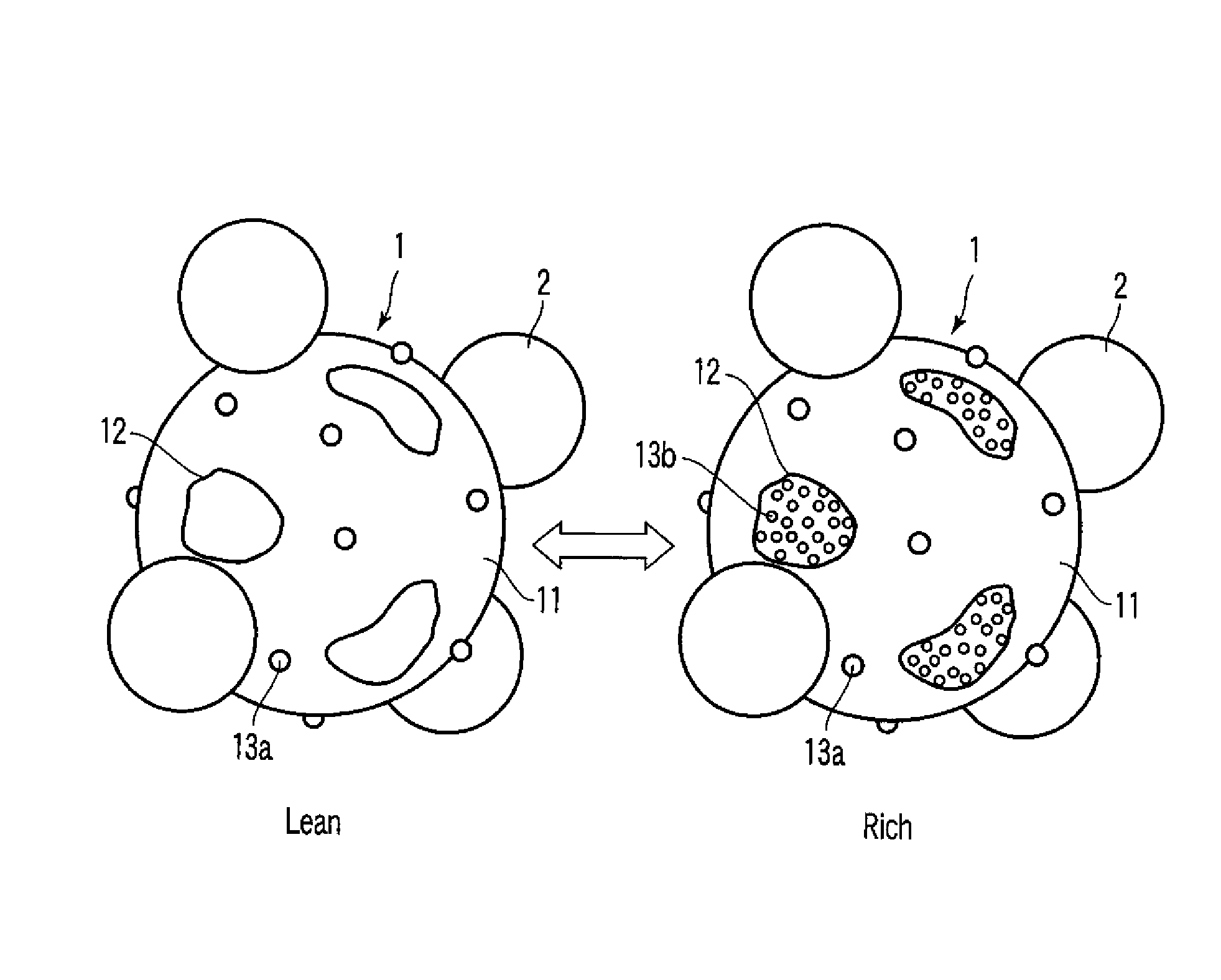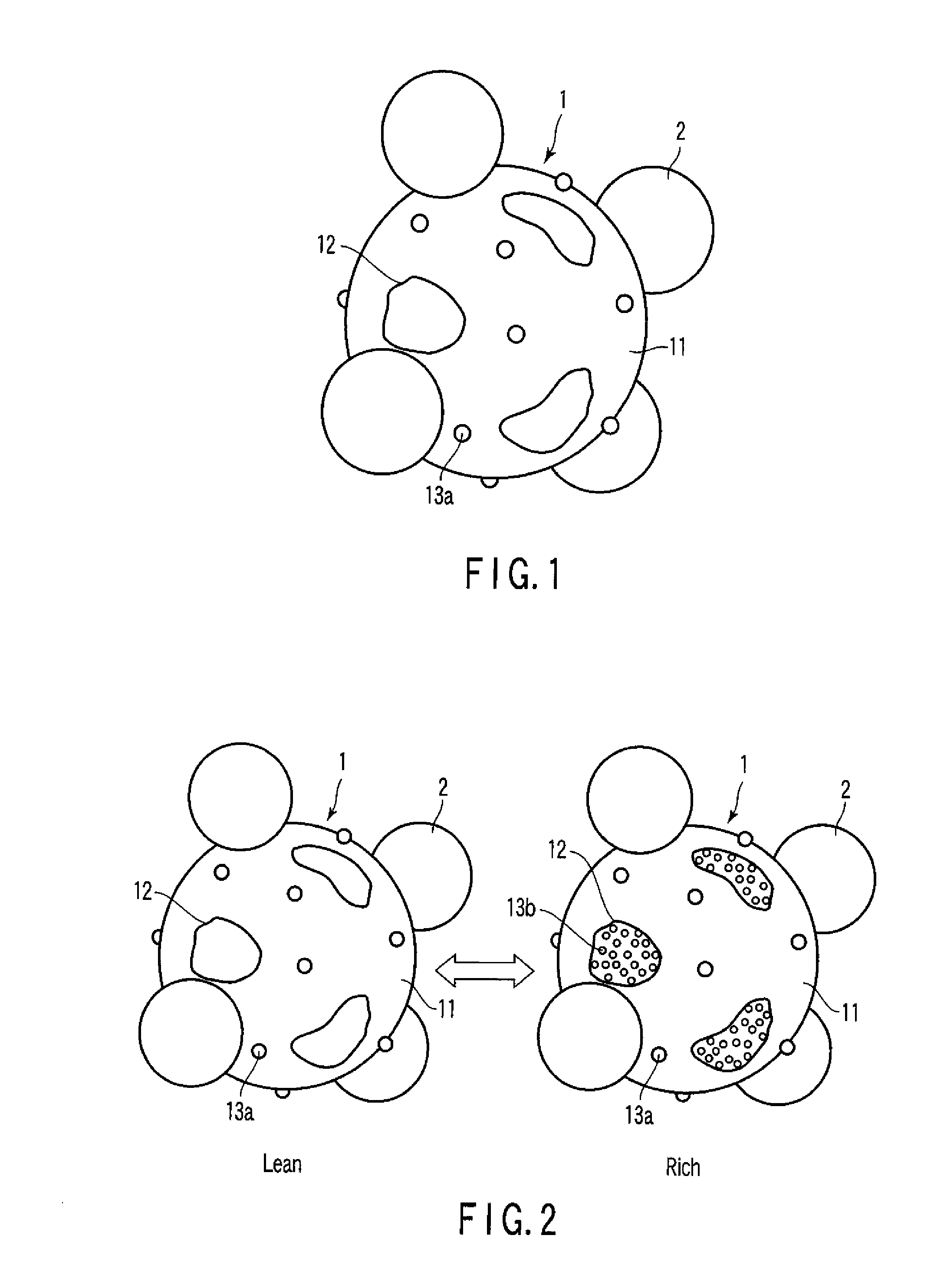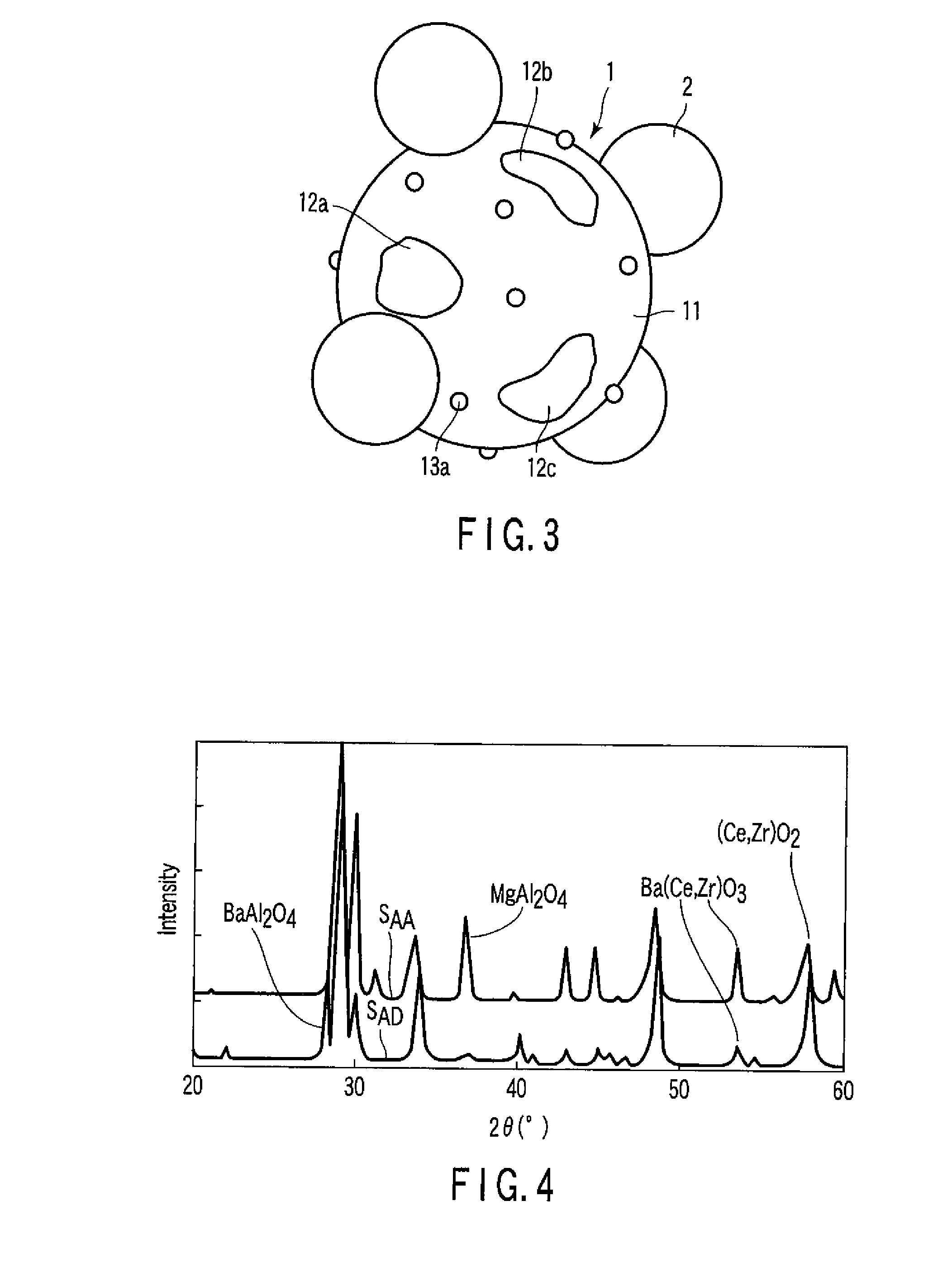Exhaust gas-purifying catalyst
a technology of exhaust gas purification and catalyst, which is applied in the direction of physical/chemical process catalysts, arsenic compounds, separation processes, etc., can solve the problems of increasing the specific surface area of the majority of exhaust gas purifying catalysts using platinum composite oxide, insufficient activity, and inability to achieve sufficient activity, so as to reduce the tendency to cause a decrease in its activity
- Summary
- Abstract
- Description
- Claims
- Application Information
AI Technical Summary
Benefits of technology
Problems solved by technology
Method used
Image
Examples
example 1
Preparation of Composite Oxide Catalyst A
[0079]Cerium nitrate [Ce(NO3)3] and zirconium oxynitrate [ZrO(NO3)2] were weighed such that the atomic ratio of cerium to zirconium was 1:1 and were added to 500 mL of deionized water. After stirring sufficiently, an aqueous solution containing 10% by weight of ammonium hydroxide was dropped into the aqueous solution at room temperature to cause coprecipitation. The aqueous solution containing the coprecipitate was stirred for 60 minutes and then filtrated.
[0080]The filter cake was sufficiently washed with deionized water and dried at 110° C. The dried material was subjected to a calcination at 500° C. for 3 hours in the atmosphere. The calcined material was crushed by using a mortar and fired at 800° C. for 5 hours in the atmosphere.
[0081]The measurement of diffraction spectrum utilizing an X-ray diffractometer was carried out on the powder thus obtained. As a result, it was proved that the powder was made of an oxide represented by a chemic...
example 2
Preparation of Composite Oxide Catalyst B
[0096]Barium acetate and calcium acetate were dissolved into 100 mL of deionized water. A composite oxide catalyst powder was prepared by the same method as described for the composite oxide catalyst A except that this aqueous solution was used instead of the aqueous solution of barium acetate. Note that concentrations of barium and calcium in the aqueous solution were adjusted such that each of the atomic ratios of barium and calcium with respect to the sum of cerium and zirconium was 10.0 atomic %. Hereinafter, the powder thus obtained is referred to as a composite oxide catalyst B.
[0097]The measurement of diffraction spectrum utilizing an X-ray diffractometer was carried out on the composite oxide catalyst B. As a result, it was proved that the composite oxide catalyst B contained a composite oxide represented by the chemical formula: BaZrO3, a composite oxide represented by the chemical formula: Ba(Ce,Zr)O3, and a composite oxide represen...
example 3
Preparation of Composite Oxide Catalyst C
[0101]Calcium acetate was dissolved into 100 mL of deionized water. A composite oxide catalyst powder was prepared by the same method as described for the composite oxide catalyst A except that this aqueous solution was used instead of the aqueous solution of barium acetate. Note that concentration of calcium in the aqueous solution was adjusted such that the atomic ratio of calcium with respect to the sum of cerium and zirconium was 20.0 atomic %. Hereinafter, the powder thus obtained is referred to as a composite oxide catalyst C.
[0102]The measurement of diffraction spectrum utilizing an X-ray diffractometer was carried out on the composite oxide catalyst C. As a result, it was proved that the composite oxide catalyst C contained a composite oxide represented by the chemical formula: CaZrO3.
[0103]The solid solution-forming ratio of platinum was determined on the composite oxide catalyst C by the same method as described for the composite ox...
PUM
| Property | Measurement | Unit |
|---|---|---|
| temperatures | aaaaa | aaaaa |
| atomic number | aaaaa | aaaaa |
| size | aaaaa | aaaaa |
Abstract
Description
Claims
Application Information
 Login to view more
Login to view more - R&D Engineer
- R&D Manager
- IP Professional
- Industry Leading Data Capabilities
- Powerful AI technology
- Patent DNA Extraction
Browse by: Latest US Patents, China's latest patents, Technical Efficacy Thesaurus, Application Domain, Technology Topic.
© 2024 PatSnap. All rights reserved.Legal|Privacy policy|Modern Slavery Act Transparency Statement|Sitemap



